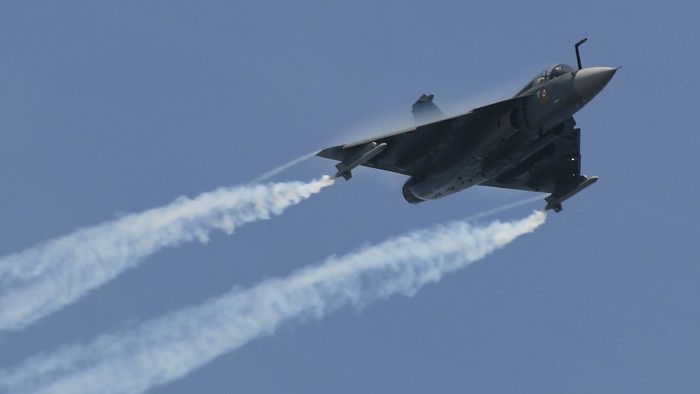Stay informed with free updates
Simply sign up to the Aerospace & Defence myFT Digest — delivered directly to your inbox.
Retail investors in India are pouring money into defence stocks after Prime Minister Narendra Modi’s push for domestic arms manufacturing drove the sector index up nearly 56 per cent in a year.
At least four large asset managers have launched sector-specific funds as experts forecast India’s defence production will grow by as much as 20 per cent a year until the end of the decade.
India shares a long, tense border with an increasingly assertive China, and with ongoing conflicts in the Middle East and Ukraine, there is strong demand for weaponry both at home and abroad.
India Business Briefing
The Indian professional’s must-read on business and policy in the world’s fastest-growing economy. Sign up for the newsletter here
But whereas New Delhi has been the world’s largest arms importer for more than two decades, Modi is now pushing for the military to buy more weapons at home. He hopes that defence will help to turn India into a global manufacturing hub.
The drive for indigenisation has led to burgeoning order books at large local companies such as Hindustan Aeronautics, which produces fighters, helicopters and jet engines; Bharat Dynamics, which makes ammunition and missiles; and Mazagon Dock Shipbuilders, the country’s largest naval shipyard.
Long the domain of state-owned firms, which still account for 85 per cent of arms production, Modi has opened up the sector to private companies, including the likes of Adani Group, Larsen & Toubro and Tata Sons. The prime minister has set an annual target of nearly $35bn by the end of the decade for domestic defence production, from about $20bn this year.
A Balasubramanian, chief executive of the asset manager Aditya Birla Sun Life — which launched a defence fund in August — said the “very large and growing order book” at the top companies was a “selling point” for investors.
But he noted that state-owned companies still dominated the sector and the government maintained a shareholding of about 80 per cent in some of the largest companies.
“Unlike most other spaces that are truly open, this is not an entirely open space,” Balasubramanian said.
The limited free float in the defence sector means there is a risk that stocks can be squeezed higher by relatively small amounts of investor buying.
With a market capitalisation of $31.9bn, Hindustan Aeronautics now trades at almost 10 times book value, on a trailing price-to-earnings multiple of 36 times. That implies investors must pay 36 rupees for one rupee of current profits.
HDFC, one of the country’s largest asset managers, was the first to launch a defence-focused fund in June 2023, and has given its investors an annualised return of nearly 73 per cent since then.
The fund generated so much interest that HDFC closed it for fresh investments this July, due to risks from the “current market valuation, volatility and the narrow universe”, it said.
Three more asset management groups have launched similar schemes after HDFC, tracking the only index for the sector managed by the National Stock Exchange. Motilal Oswal, a stockbroker and asset manager, promotes its fund by asking: “India is investing in defence, are you?”
With returns of nearly 56 per cent this year, the Nifty India Defence index has drastically outperformed the 10 per cent return on the wider Nifty 50 benchmark during the same period.
India is slowly upgrading its ageing military hardware, and desperately needs to buy new fighter jets, tanks, warships and artillery guns, as nearly two-thirds of its military equipment is classified as vintage.
The government allocated about $20bn for military modernisation for the fiscal year ending March 2025 — marginally up from $19bn last year — of which 75 per cent is earmarked for the domestic industry.
A banker managing one defence fund said the total market cap of the sector was minimal 18 months ago, but since then, “we have seen a very sharp jump, not just in the valuation, but even the number of funds that are tracking”.
Apart from the significant financial returns, retail buyers also latch on to an emotional, nationalistic motivation, even when the banks choose not to advertise it. Investors feel that indirectly funding the domestic arms makers will “help you protect our borders”, the banker said.
https://www.ft.com/content/d0a168f4-5990-42a6-9958-6209d9e17a76


